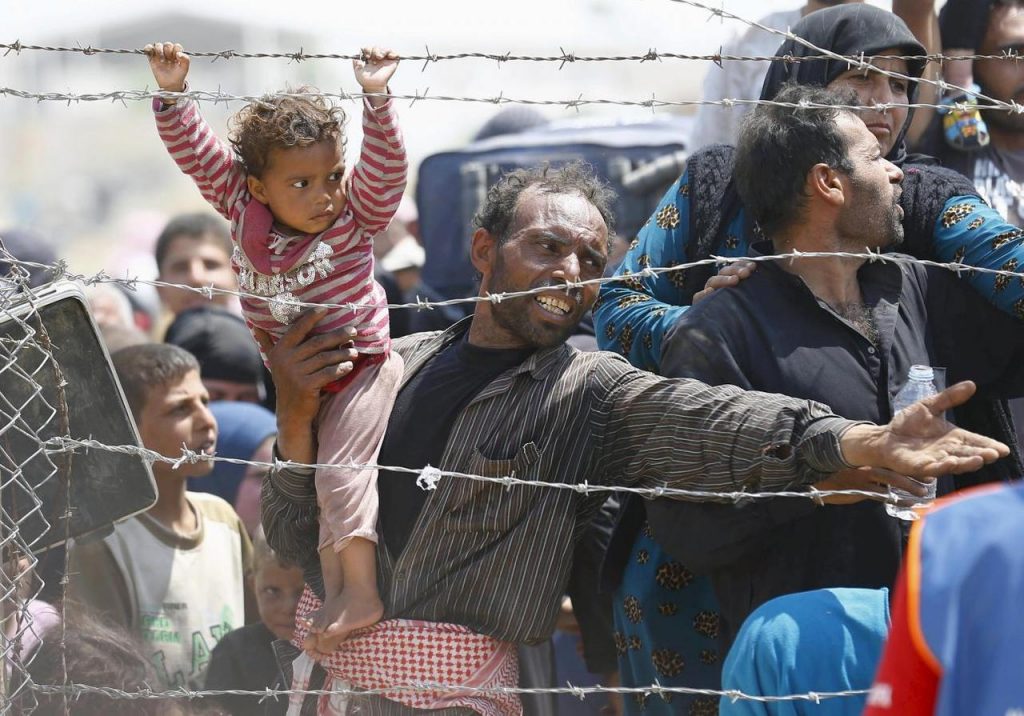
- ARAB NEWS
- 18 Jul 2025

The fighting in Idlib has displaced 800,000 people since December, with more than 100,000 in the last week alone. The International Rescue Committee has called it “the largest civilian displacement since the war started nine long years ago.” This says a lot, since the Syrian civil war already has created at least 5.6 million refugees and 6.6 internally displaced — totaling more than half the pre-war population.
With neighboring countries hosting thousands to millions of refugees, there is growing pressure for them to return to Syria. Within Syria, many displaced Syrians face extreme difficulties and long for a return to normality. Over the last few years, thousands of Syrian refugees have voluntarily returned to their country, though this represents a very small minority of the overall refugee population. Smaller numbers have been forcibly returned from Turkey and Lebanon, according to media and human rights groups’ reports. The experiences of these returnees are often not encouraging to others who might consider going home, and there are enormous obstacles in the way of Syrians who may wish to return to their former homes.
The most fundamental challenge is a lack of basic security. This stems from two trends: Ongoing conflict and the Assad regime’s reprisals. As events in the last week demonstrated, with continued fighting in Idlib and an unusual case of direct conflict between US troops and Assad loyalists near Qamishli, the war is not over. Even in areas that now are relatively calm, Syrians have expressed concerns that Daesh could re-emerge or that the types of grievances that led to the war remain unaddressed and could re-ignite conflict.
In regime-controlled areas, returnees — or anyone associated with opposition to Assad — are at risk of detention, often subject to torture and even death. Multiple studies of Syrian refugees and media reports have made it clear that security is most refugees’ primary concern and that many cannot imagine returning to live under the same government that has killed many thousands of civilians and often targeted their communities. This is a widespread problem, preventing refugees in many countries from considering return and hampering Turkey’s efforts to create a “safe zone” in northeastern Syria. Many Syrians do not trust the Assad regime or any other actors involved in the conflict to ensure their safety.
Another major obstacle is Syria’s housing crisis. The war has caused extensive damage to residences and infrastructure throughout the country. Beyond destruction due to fighting, many areas experienced looting that badly damaged homes, with robbers sometimes going so far as to strip wire to sell the copper. The lack of housing combined with internal displacements that have led to crowding in many areas has helped to create a competitive, expensive and often corrupt rental and housing market. In some cases, returnees find other displaced Syrians living in their former homes and have limited options for reclaiming their property.
The Syrian authorities have exacerbated the housing crisis through several means, including ones designed to make it difficult for members of communities that opposed the regime to return to their former homes. While it is understandable that a government would want to use extensive damage as an opportunity to create new and improved development, the Syrian government has gone far beyond that, including demolishing undamaged properties; the motivation ranges from profiteering to punishing anti-regime communities to ensuring regime control over strategic areas in the future. The government has passed laws that make it more difficult for people to reclaim properties. In some cases, the regime has refused permits for repairs to communities that were seen as opposing Assad. The authorities have allowed — and sometimes participated in — networks of fraud and scams designed to profit off of property owners who are displaced or who lack regime connections. Many of these policies appear designed to reshape Syria’s future demographics in ways that consolidate the regime’s control.
Related to the housing crisis is the widespread destruction of infrastructure and the decline in available services. In many areas, hospitals and medical facilities particularly were targeted in the war. Returnees often would face a lack of basic services.
Insufficient jobs and economic opportunities are other obstacles. Many refugees and displaced people face very difficult economic circumstances and might be willing to return home if there was sufficient security. However, the combination of security concerns and economic difficulties are major factors discouraging return.
In regime-controlled areas, returnees — or anyone associated with opposition to Assad — are at risk of detention, often subject to torture and even death.
Kerry Boyd Anderson
Other obstacles include reported increases in crime, corruption and extortion within a traumatized populace. Many Syrians have noted the deep distrust that now runs throughout Syrian society. If the conflict had ended with some form of transition government that represented different parts of society and sought reconciliation, there would be some hope for creating security and beginning to restore trust. However, since the regime has mostly won the war through a combination of brutality and external alliances, and appears to have little interest in reconciliation, it is difficult to see how the society can move beyond deep divisions.
Given the scale of displacement, Syria’s future demographics will be fundamentally different. Many refugees will never return home, as past refugee crises in other parts of the world have demonstrated. Society may be increasingly segmented by class and sect and very likely will be more urbanized. Unfortunately, these trends are unlikely to lay a foundation for a stable future Syria.